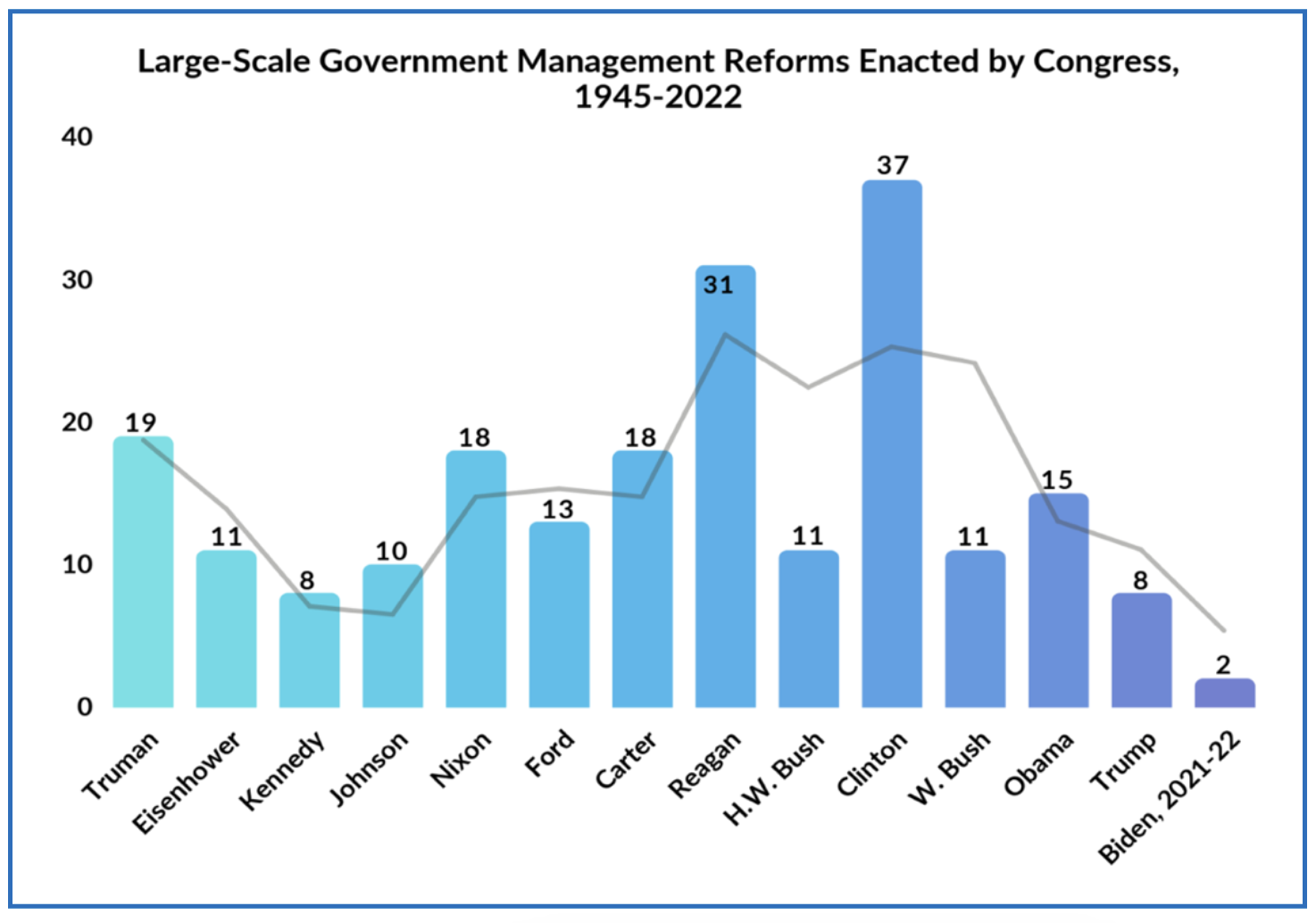
Sean Gladwell/Getty
Biden’s Dilemma, Part 8: Government Reform Must Be Something He Wants To Do
The latest in a series of infographics on Americans’ views of government reform heading into the 2024 election.
President Biden heads toward the 2024 presidential campaign with the federal government’s job rating in decline, support for a smaller government increasing, and the demand for major government reform at a 30-year high. This series of charts and graphs explores the current landscape when it comes to Americans’ views of government reform.
Although President Biden rarely misses a chance to highlight his service in the war on government fraud, waste and abuse, he has long eschewed government reorganization. This reluctance dates back to the 2008 presidential campaign, when Barack Obama asked each of his potential running mates if they would be “very happy to reorganize the government.” Biden’s answer left no doubt: “No, that’s not what I want to do.”
Biden and Congress may yet find common ground on bureaucratic reform. But the number of large-scale management reforms enacted each year has fallen sharply, as leaders shifted their focus to the urgent problems facing the nation. Boring though reform might be to policy insiders, a thorough review of federal management challenges could lead to a welcome dose of old-fashioned reform legislation.
Described by New York Times columnist Paul Krugman in 2021 as the “big spender” America wants, Biden must now become the bureaucratic repairman the federal government desperately needs. To this end, Biden should move quickly to flatten the bloated federal hierarchy, streamline the presidential appointments process and modernize the rulemaking process, while making sure the blended federal workforce of 11 million active-duty military personnel, civil servants, contractors, grantees, and postal workers have the resources, systems and leadership to succeed.

The trend lines and analyses presented in this series come from stand-alone random-sample surveys conducted by Lake Research Partners, Maguire Research Services, the Pew Research Center, SSRS, and the University of Pennsylvania Annenberg Public Policy Center. Occasional data points were also harvested from search engines managed by survey aggregators such as PollingReport.com, the Roper Center’s iPOLL database, and publicly available Pew Research Center surveys dating back to 1997. All survey findings were based on random-sample surveys of at least 1,000 respondents interviewed by cell phone and landline, with estimated error rates of 3% to 4% at a 95% confidence level.







